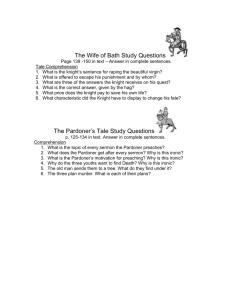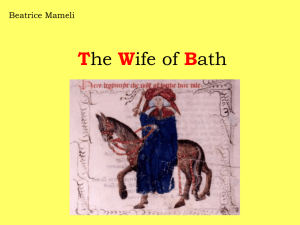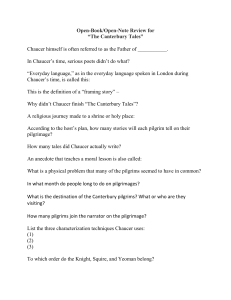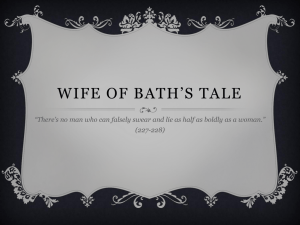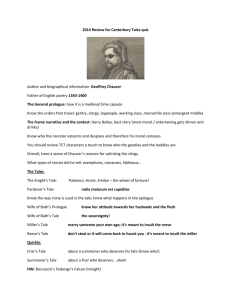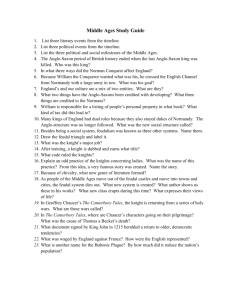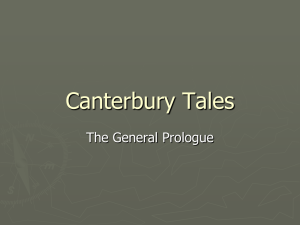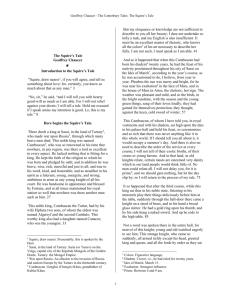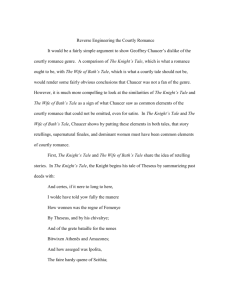Canterbury Tales
advertisement
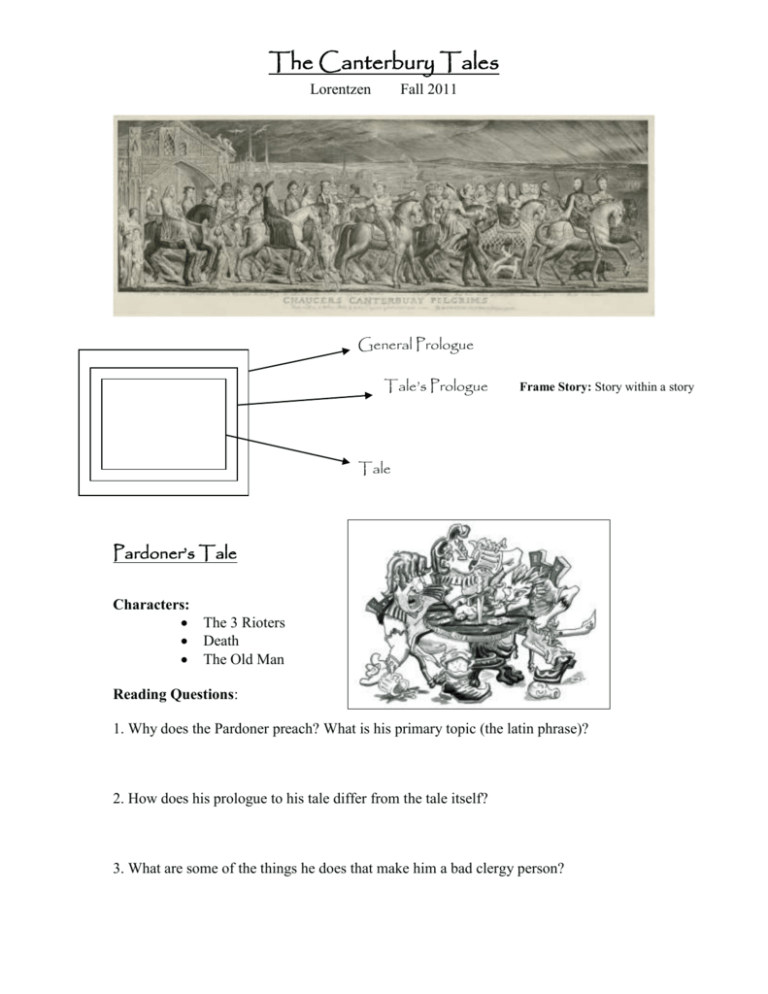
The Canterbury Tales Lorentzen Fall 2011 General Prologue Tale’s Prologue Frame Story: Story within a story Tale Pardoner’s Tale Characters: The 3 Rioters Death The Old Man Reading Questions: 1. Why does the Pardoner preach? What is his primary topic (the latin phrase)? 2. How does his prologue to his tale differ from the tale itself? 3. What are some of the things he does that make him a bad clergy person? 4. What is it that makes him a successful clergy person? Explain why he is successful? 5. What sins do the three young men commit? 6. Who is involved in the altercation at the end of the tale? What happens, why, and how is it resolved? 7. Is there irony present in the story? More Provocative Questions: Who or what is the Old Man in the Tale? The exemplum… Chaucer’s Canterbury Tales has often been read as a social critique. What do you think Chaucer intends to critique in this tale? Relevant Passages “Radix malorum est cupiditas” “For my exclusive purpose is to win And not at all to castigate their sin. Once dead what matter how their souls may fare? They can go blackberrying, for all I care!” The Wife of Bath’s Tale Characters: The Maiden The Lusty Bachelor Knight King Arthur Queen (Gwenevere) The 24 Dancing Maidens The Old Hag Reading Questions: 1. When is this tale set? (i.e., during the mythic reign of what king?) 2. What crime does the lusty bachelor commit? What is "maidenhead"? [Hint: This does not mean he decapitated the girl, as some students have mistakenly declared.] 3. What is the initial punishment King Arthur orders for the knight? Who intervenes and requests a special trial? 4. What must the knight do to save his head (i.e., what mission does the court give him)? 5. How long does the Knight have to fulfill this mission? How does this compare to the time allotted to Sir Gawain in Sir Gawain and the Green Knight? 6. Name several responses given by women when he asks them the question: 7. What strange sight does the knight see while riding through the forest on his return journey? 8. What does the Old Hag say she wants in return for providing the answer to the knight's riddle? 9. What are the wedding celebrations like when the knight marries the hag? (trick question!) 10. What two options does the hag present to the knight? 11. Which of these two options does the knight pick (trick question!) 12. How does the hag’s appearance change at the end of the story? More Provocative Questions: How does the Hag’s transformation externally match or mirror an internal transformation of the rapist knight who earlier gave no respect to women’s wishes? The exemplum… Chaucer’s Canterbury Tales has often been read as a social critique. What do you think Chaucer intends to critique in this tale? Relevant passages for identification: A. “Choose, now,” said she, “one of these two things, aye, To have me foul and old until I die, And be to you a true and humble wife, And never anger you in all my life; Or else to have me young and very fair And take your chance with those who will repair Unto your house, and all because of me.” B. “My lady and my love, and wife so dear, I put myself in your wise governing; Do you choose which may be the more pleasing, And bring most honour to you, and me also. I care not which it be of these things two; For if you like it, that suffices me.” Character Continuum – place the characters on the continuum below. Most Moral Least Moral
